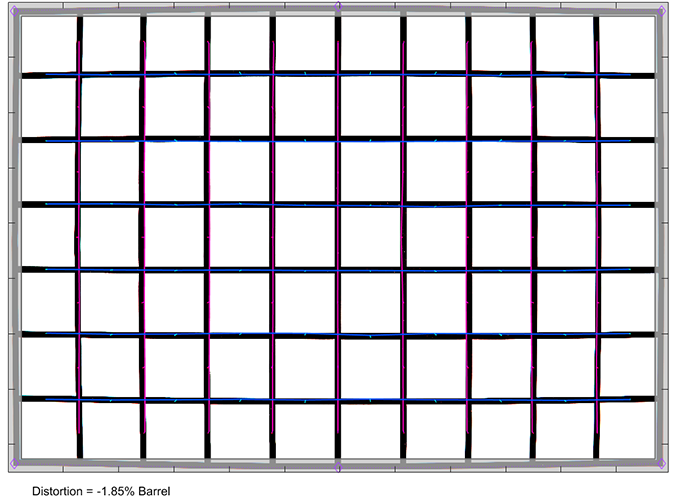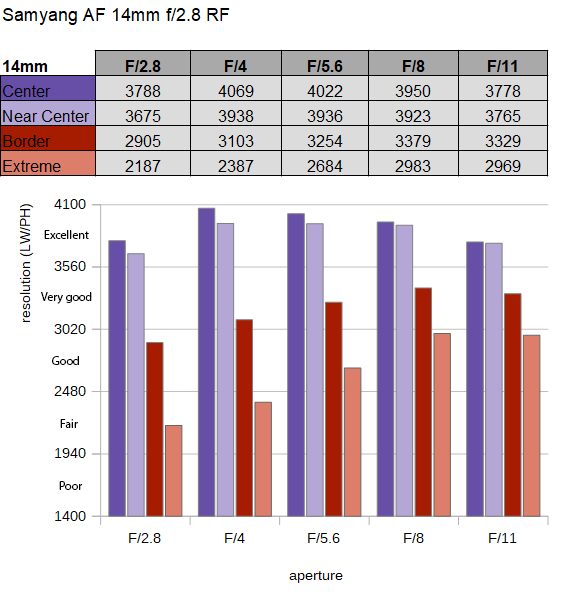Introduction
As of the time of this review, Samyang has been the only third-party manufacturer offering AF lenses in Canon RF mount – namely the Samyang (Rokinon) AF 14mm f/2.8 RF & AF 85mm f/1/4 RF … but their status is unclear. Canon R-mount is a closed ecosystem with Canon obviously not willing to issue mount/protocol licenses. But it seems as if there’s even more to it. Samyang appears to have reverse-engineered the protocol but, at least according to messages on social media, they are about to stop manufacturing AF lenses for R-mount (because Canon threatened them?). The future of these lenses is therefore foggy at best. However, you can still buy the AF 14mm f/2.8 RF for as little as 650USD/EUR making it an attractive alternative to the superb but expensive, native Canon RF lenses. The lens is also available in Sony E-mount using the same optical formula – with Sony’s blessing apparently.
The build quality of the AF 14mm f/2.8 FE is very good. The lens body is made of metal including the smoothly operating focus ring. Weather-sealing is not provided although there is at least a mount-gasket. The metal part of the barrel has a satin finish which is a little slippery. As you can see below the front element is slightly protruding so it’s not possible to mount front filters. Typical for such lenses, it features a built-in, petal-shaped hood also to protect the vulnerable front element. The lens cap clamps to the lens hood which is the common approach for such lenses as well. The cap doesn’t scream quality though.

The AF motor is fairly quick and noiseless. Manual focusing works by-wire thus you are driving the AF motor when turning the focus ring. This works quite well. The lens is also compatible with the RF version of Samyang’s (Rokinon) “Lens Station” which allows AF fine-tuning as well as firmware updates.

| Specifications | |
|---|---|
| Optical construction | 14 Elements in 10 Groups including 3x aspherical,2x ED elements |
| Number of aperture blades | 7 (rounded) |
| min. focus distance | 0.20m (max. magnification ratio 1:8.3) |
| Dimensions | 86×95.3mm |
| Weight | 523g |
| Filter size | – (rear-filter slot) |
| Hood | barrel-shaped, built-in |
| Other features | – |
Distortion
The Samyang / Rokinon AF 14mm f/2.8 RF shows a heavy barrel distortion (~3.8%) in RAW files. This isn’t unusual for such an ultra-wide lens and is acceptable for scenes such as landscapes although a bit much for architecture, for instance.
The auto-corrected result is a little curious. It carves off about 2% of distortion down to a decent ~1.8%. The interesting part is that Samyang has a much more aggressive profile in the Sony version which is distortion-free when corrected. However, profiles can be improved over time (at least in RAW converters).


Vignetting
The vignetting is very high at f/2.8 with a light-falloff of almost 3 EV (f-stops). However, to be fair, this is to be expected from a 14mm lens. Stopping down reduces the issue but it remains visible. Keep in mind that “natural” vignetting is also contributing to this. Interestingly the figure is slightly higher than on Sony. This may either relate to the different sensors or a more contrasty tone curve (Note: we are using straight JPEGs for the vignetting tests to mirror the user experience and manufacturer characteristics).
Auto-correction gives us a bit of a roller-coaster ride. At maximum aperture, the vignetting is reduced to ~1.3EV (f-stops) which certainly helps in making the setting more usable. At f/4 the vignetting is down to 1EV (f-stop) before bouncing back to around 1.3EV at medium apertures. This is, once again, somewhat better handled in Sony E-mount, possibly because Samyang didn’t need to reverse-engineer the firmware.

MTF (resolution) at 45 megapixels (EOS R5)
As usual, we are splitting the resolution analysis into two parts – based on a 45mp sensor (EOS R5) and at 30mp (EOS R) to cover two different user profiles. Unsurprisingly, the Samyang / Rokinon AF 14mm f/2.8 RF struggles a bit on the EOS R5. The broader center resolution is already very good at f/2.8 whereas the borders are mediocre and the corners are soft. The center reaches its peak performance between f/4 and f/5.6 but the corners/borders are only gradually improving with a peak at f/8. The border quality scratches a very good rating in our book and the corners make it to good levels at least. Diffraction has a higher impact in the image center whereas the outer image field can mostly retain its level.
The centering quality of the tested sample was soso – which is, unfortunately, a rather frequent issue with Samyang lenses. e.g this sample performed slightly better than the E-mount sample. The field curvature is low.
Please note that the MTF results are not directly comparable across the different systems!
Below is a simplified summary of the formal findings. The chart shows line widths per picture height (LW/PH) which can be taken as a measure of sharpness. If you want to know more about the MTF50 figures you may check out the corresponding Imatest Explanations

MTF (resolution) at 30 megapixels (EOS R)
Not everybody has an expensive EOS R5 so some of our readers are surely interested in how the lens performs on a more sanely priced camera.
As you can see below, the general characteristic remains similar but the pixel-level sharpness is, of course, higher due to the reduced pixel density. The corner quality is still not great at f/2.8 but the borders “improve” quite a bit based on this setup. Stopping down helps to lift the corner quality resulting in very high sharpness at f/8.
Please note, that we apply a MILD amount of sharpening during the RAW conversion and sharpening is more receptive to cleaner edges on lower megapixel images so, besides other reasons, the numbers obtained with the EOS R are NOT comparable to the R5 variant.

Chromatic Aberrations (CAs)
Lateral CAs (with the numbers obtained at 45mp) are fairly high with an average pixel width around the 1.5px mark at the image borders. The CAs are substantially higher in the corners though. However, keep in mind that lateral CAs can be corrected without losing image quality.

Bokeh
Ultra-wide lenses are rarely great when it comes to the quality of the bokeh. This relates to the complex design and specifically the use of aspherical elements – 3 in the case of this lens. As you can see below, out-of-focus highlights have a very busy inner structure and while the Samyang / Rokinon AF 14mm f/2.8 RF features 7 rounded aperture blades, the edgy aperture is already showing up at f/4.

The Samyang / Rokinon AF 14mm f/2.8 RF is an extreme lens sold at an extremely low price relative to its specs. This is usually not a good combination but in the grand scheme of things, Samyang did a decent job here. Of course, everything has to be seen in context. The broader center is tack sharp even on demanding cameras but the quality of the outer image field struggles with a high-megapixel sensor. The corner resolution is soft here and you have to stop down quite a bit for good albeit still unexciting results. That's a much lesser issue on lower megapixel cameras such as the EOR R6 or RP with their reduced pixel density. The performance is much "better" at medium aperture settings, you can expect images to be very sharp across the frame. Lateral CAs are high in the corners. RAW images show heavy barrel distortion and the vignetting is very high at f/2.8 but these secondary aspects can be (mostly) auto-corrected. The quality of the bokeh is ... meh ... but this focal length class isn't known for lenses with great out-of-focus rendition.
In terms of build quality, the Samyang lens is quite convincing. Nothing wobbles and most of the lens is made of metal. We aren't a huge fan of the satin finish but that's largely a matter of taste. The lack of weather-sealing (other than a mount-gasket) is a bit unfortunate but not surprising in this price class. The AF is plenty fast for an ultra-wide lens, and it's noiseless, too.
The Samyang / Rokinon AF 14mm f/2.8 RF is an interesting lens but besides its characteristics, there are two caveats. Based on what we've seen in the past, you can expect a rather high sample variation from Samyang lenses and there are fundamental question marks around the future of third-party lenses in Canon R-mount. Canon doesn't seem to be willing to allow third-party manufacturers in its ecosystem - no matter the drawbacks for users - and Samyang seems to have received some heat. While the lens has already been delisted on Samyang's own homepage, it is still shown on the Rokinon sub-brand website (including the RF-mount "Lens Station"). Whether Samyang will restart the production of R-mount AF lenses at some stage remains to be seen.
-
Optical Quality
-
Build Quality
-
Price / Performance


